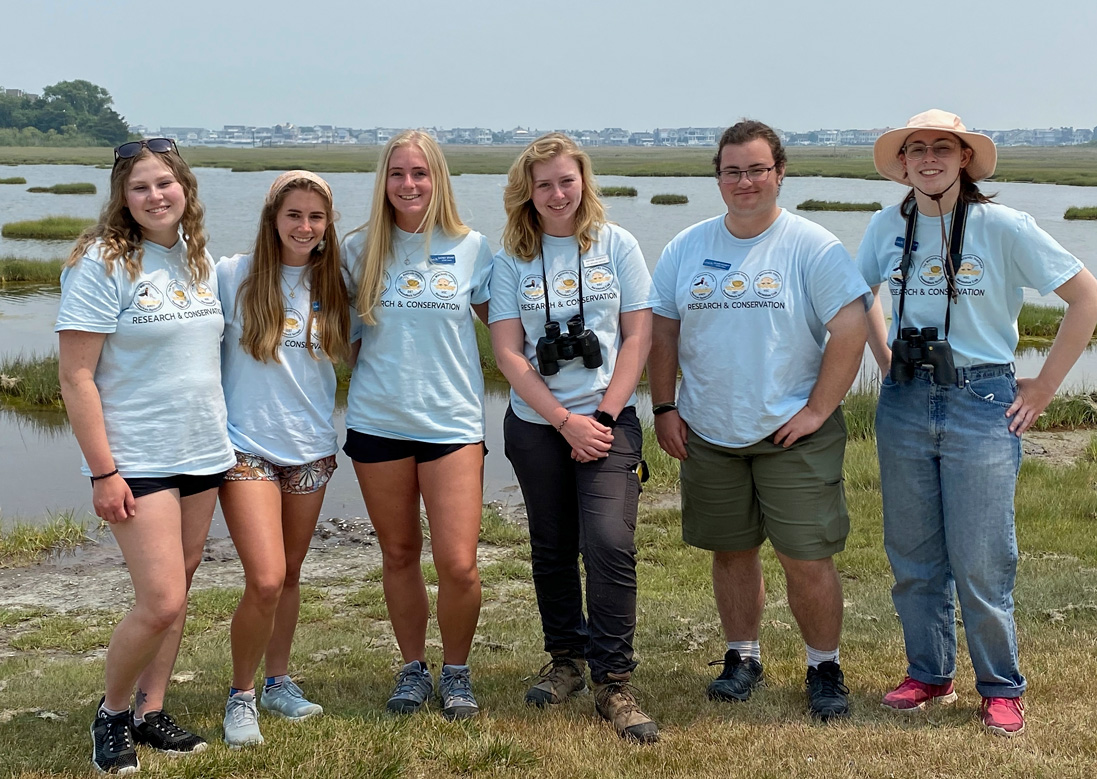
This summer, six Luing Family Internship Coastal Conservation Research Program interns brought incredible energy and insights to The Wetlands Institute. Interns contributed to long-term monitoring of diamondback terrapins and coastal birds, designed independent projects that deepened our understanding of coastal wildlife, developed essential skills in fieldwork and data analysis, and built connections and memories that will last a lifetime.
Pictured left to right: Rachel Helt, Carly Shaw, Darby Brant, Kaycee Doherty, Oliver Puckett, Rebecca Miller
Intern Projects Overview
Lead intern Rachel Helt (Lebanon Valley College) examined the effectiveness of wildlife fencing installed along Sea Isle Boulevard to keep nesting terrapins off the road. Rachel found that terrapin crossings were associated with breaks in the fence, highlighting the need for fence maintenance.
Carly Shaw (Flagler College) investigated terrapin use of an elevated nesting habitat constructed with dredged material. Carly showed that the habitat, created for beach-nesting birds, is used by nesting terrapins, including one turtle marked in 1997.
Darby Brant (Stockton University) assessed the response of Cope’s gray tree frogs to invasive vegetation management in a maritime forest. Her work identified that tree frog populations are still present but may be impacted by current practices and could be improved with future vegetation planting.
Kaycee Doherty (Catawba College) compared avian species richness, behavior, and nesting on natural marshes and marshes surrounding new and historic dredged material placement. She found that areas near older enhanced marshes may host more bird species and be used more commonly for foraging and nesting.
Oliver Puckett (Texas A&M, Corpus Christi) studied interactions between Black-crowned Night-Herons and other birds at mixed-species nesting colonies. Oliver observed night-herons interacting with other night-herons, myriad wading birds, and potential nest predators such as Fish Crows and Herring Gulls.
Rebecca Miller (Stockton University) investigated avian use of recent dredge placement sites intended to produce wading bird habitat. Rebecca was surprised to see more gulls than waders; she found that enhanced sites provide resting habitat above the high tide line for a variety of species.
